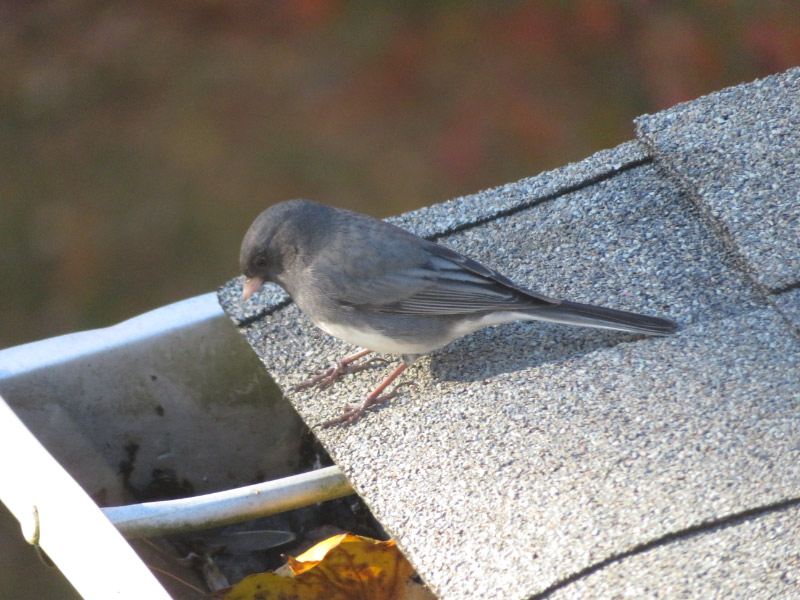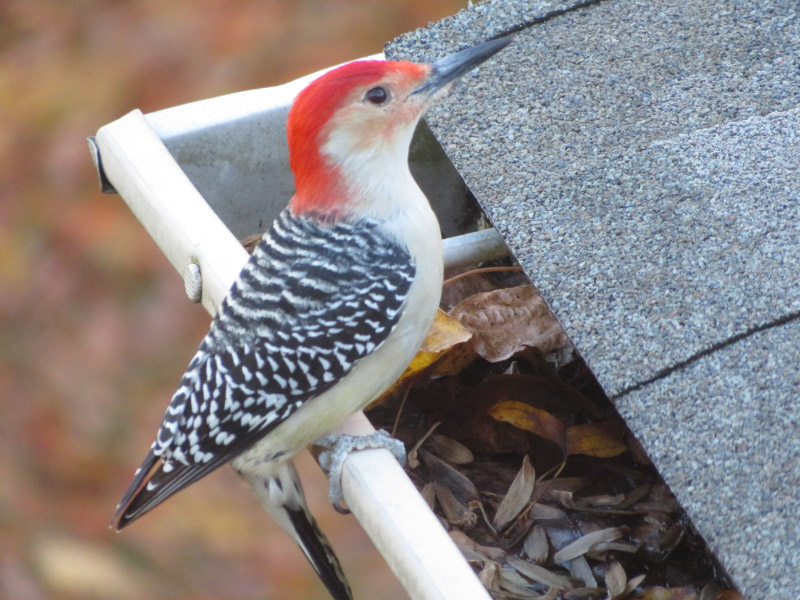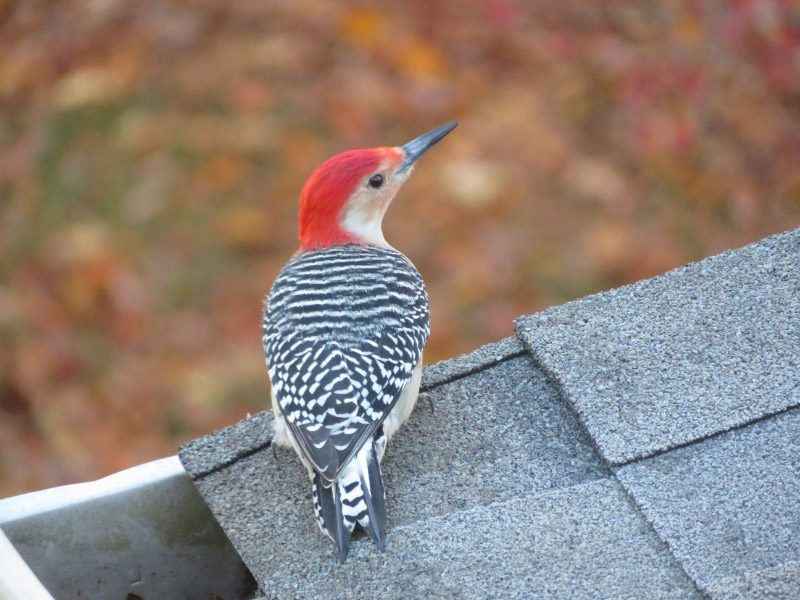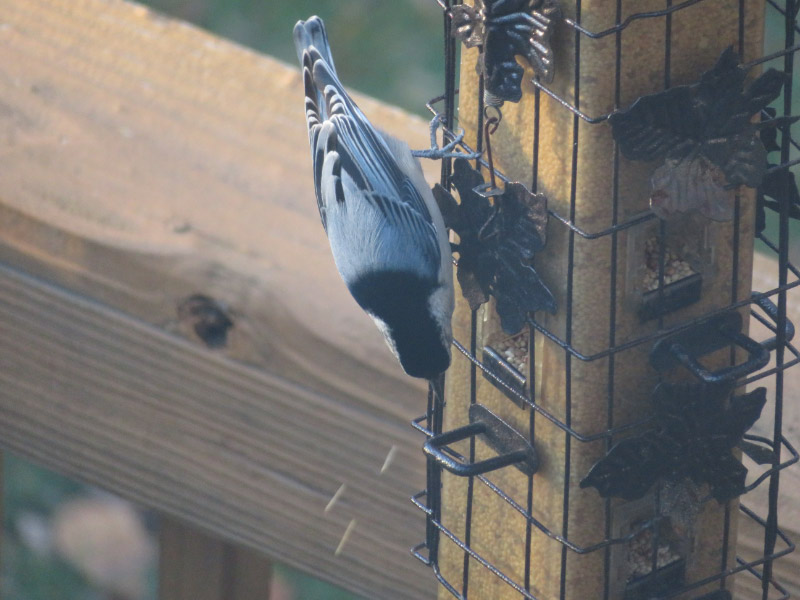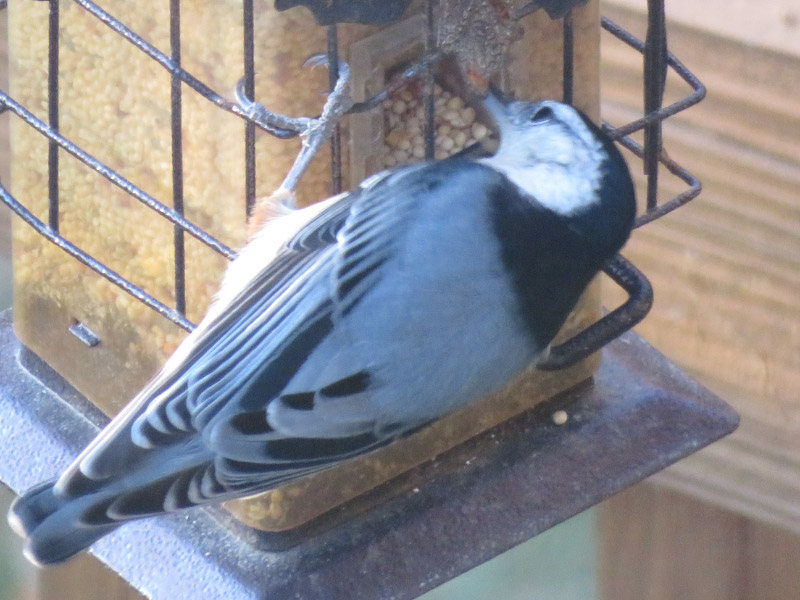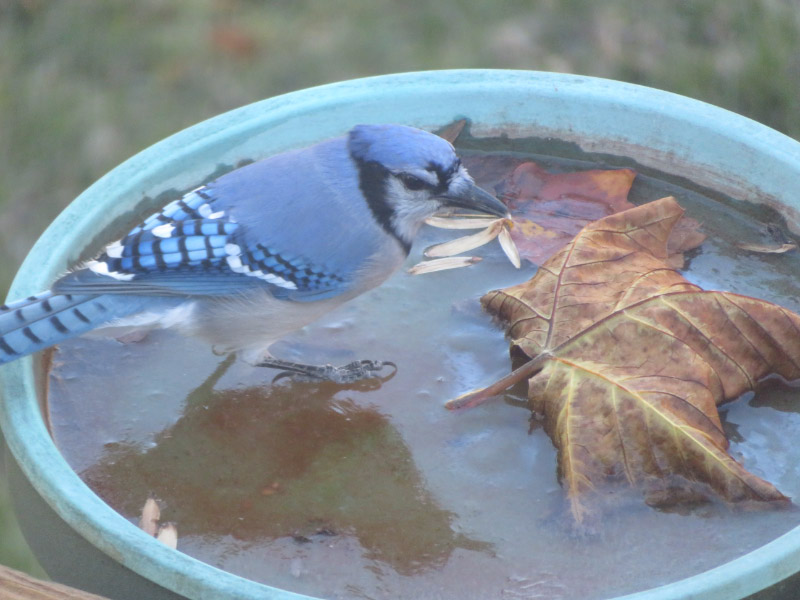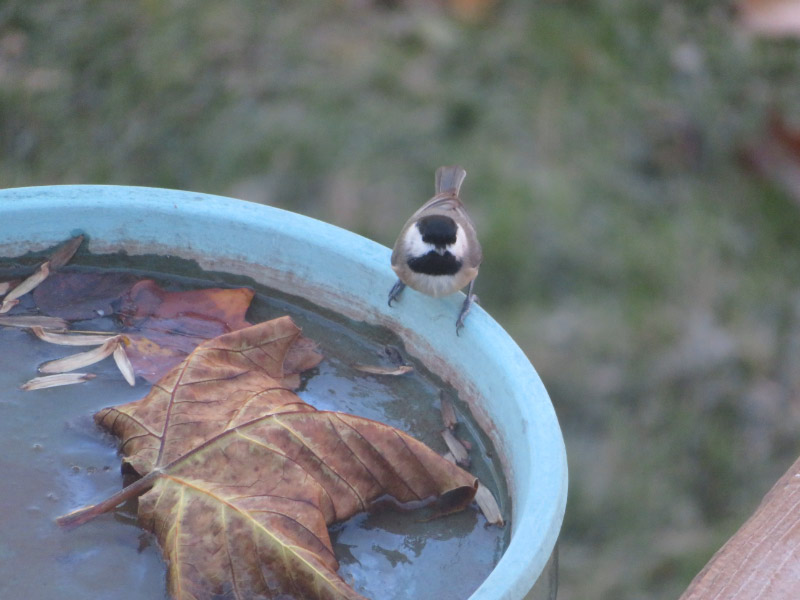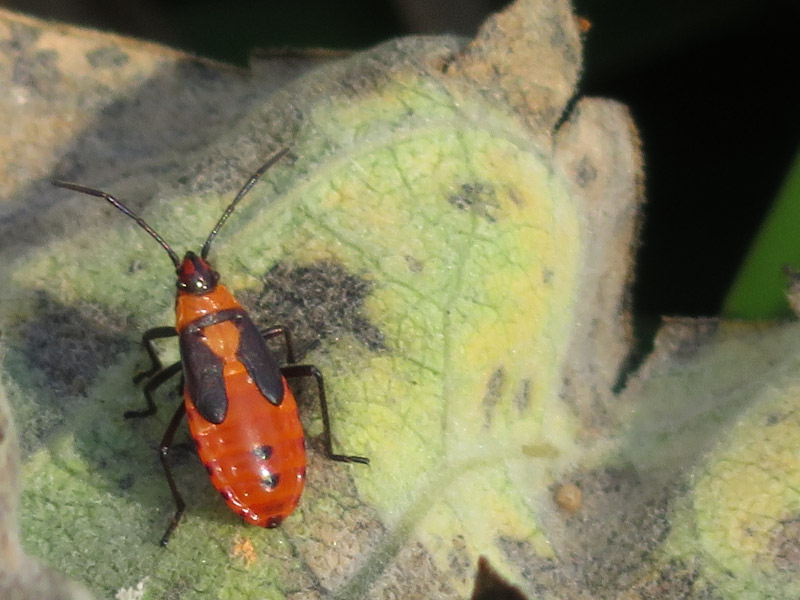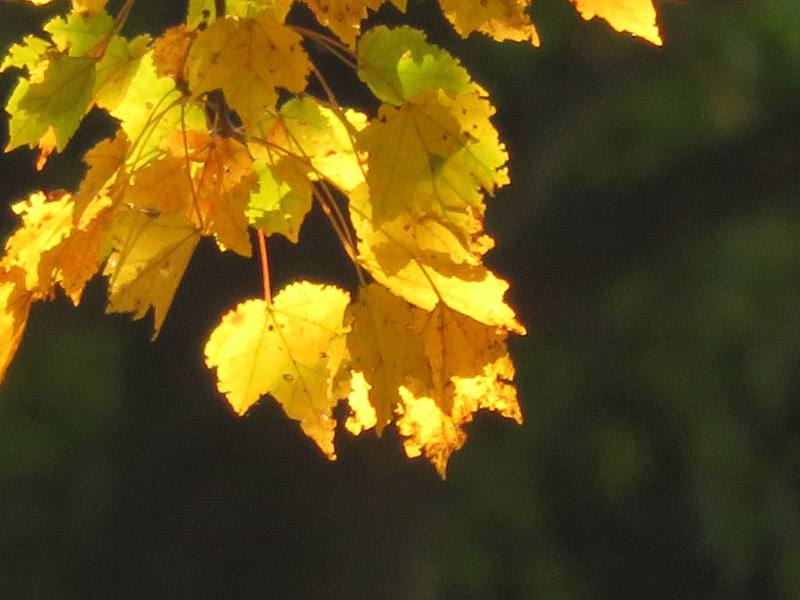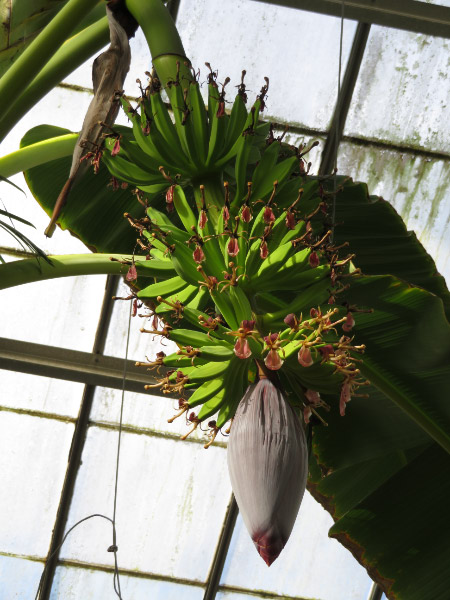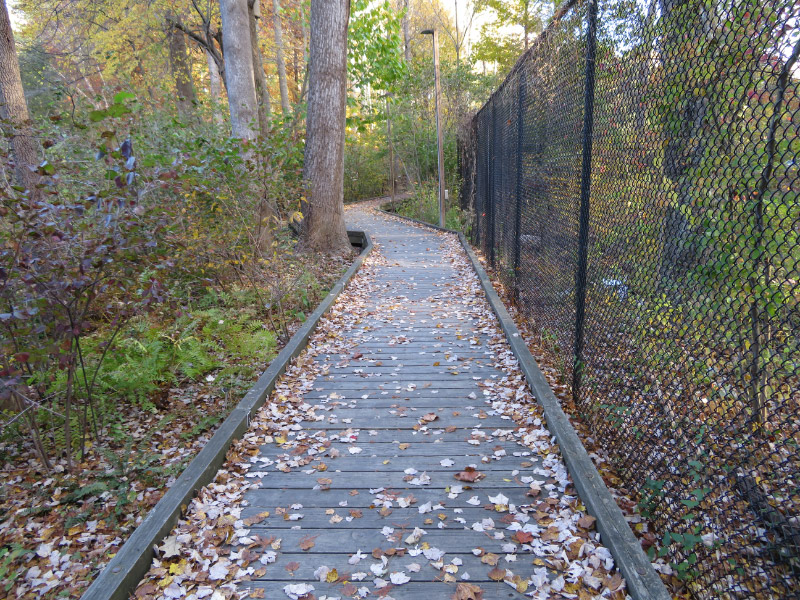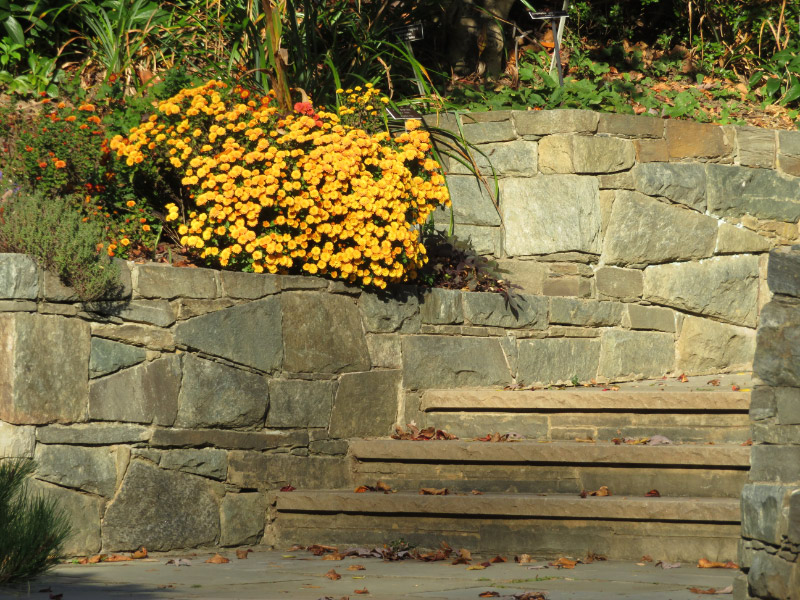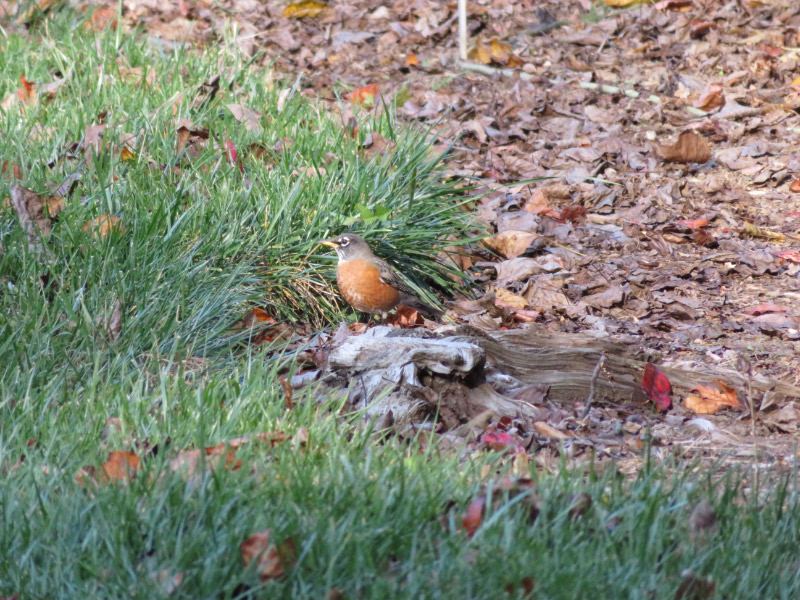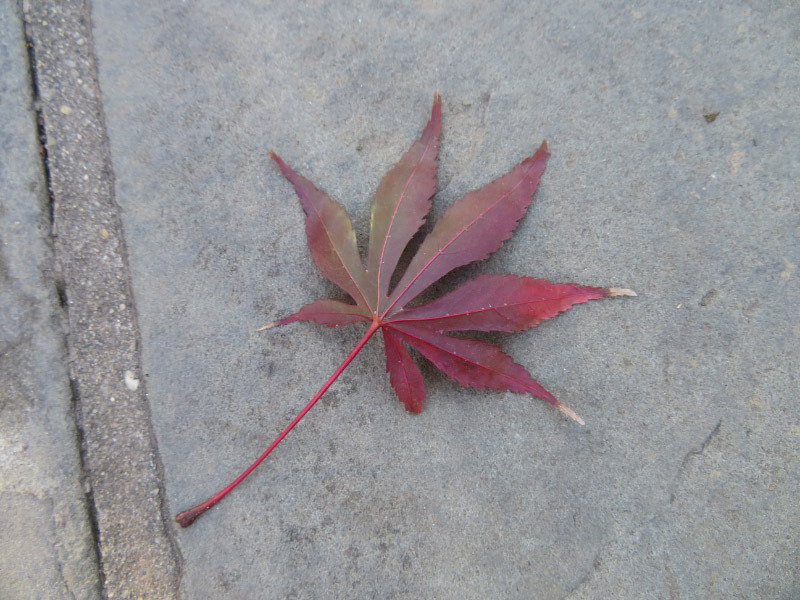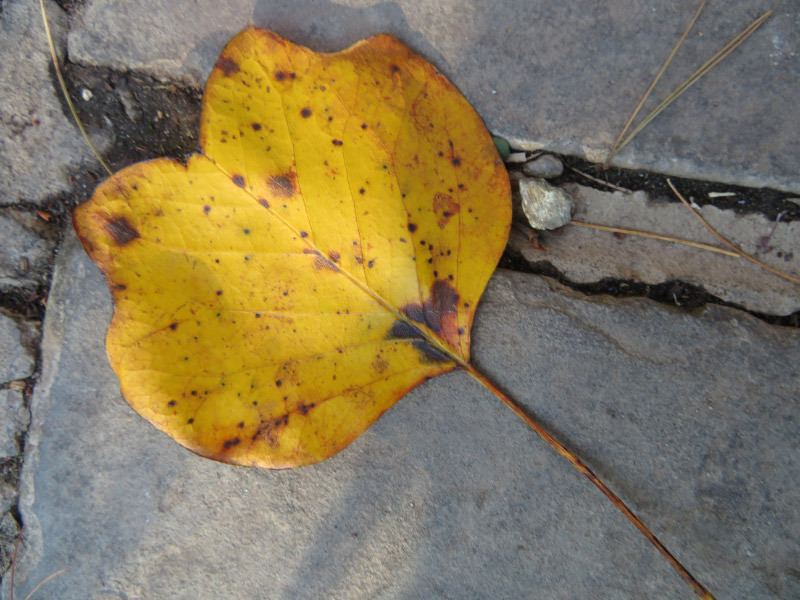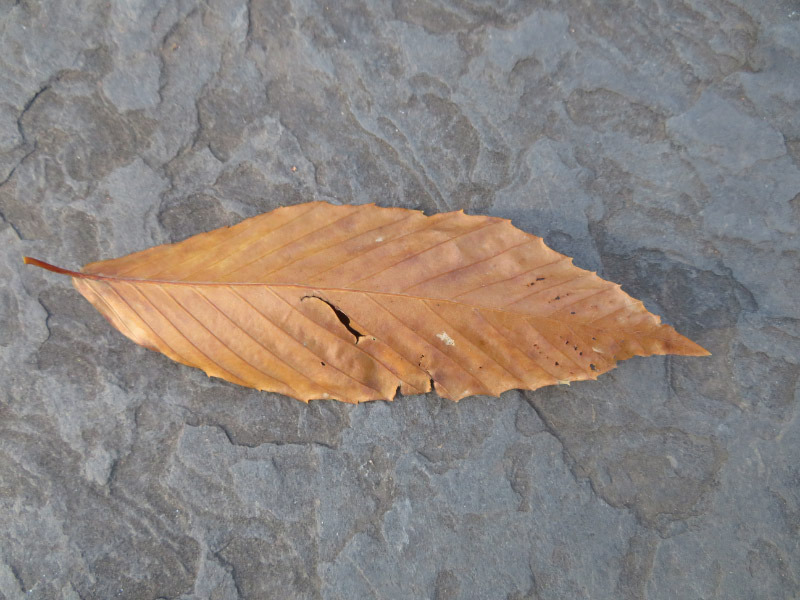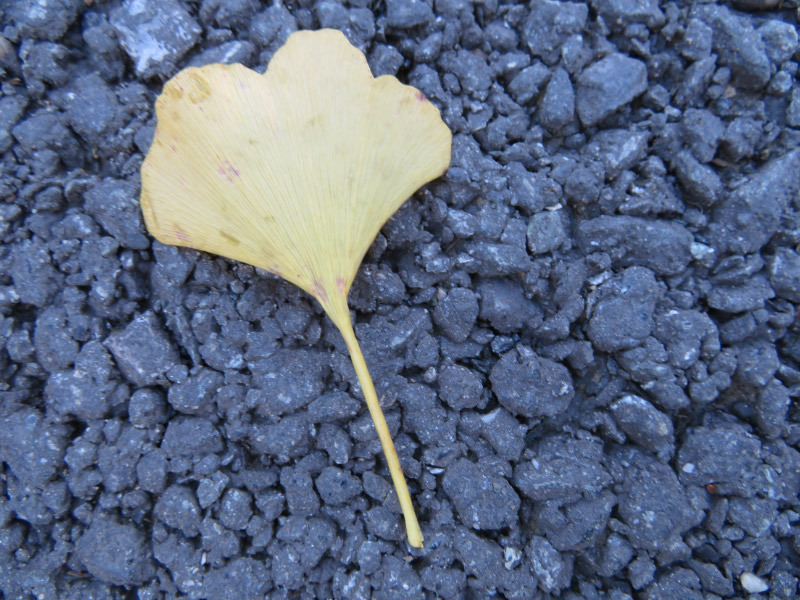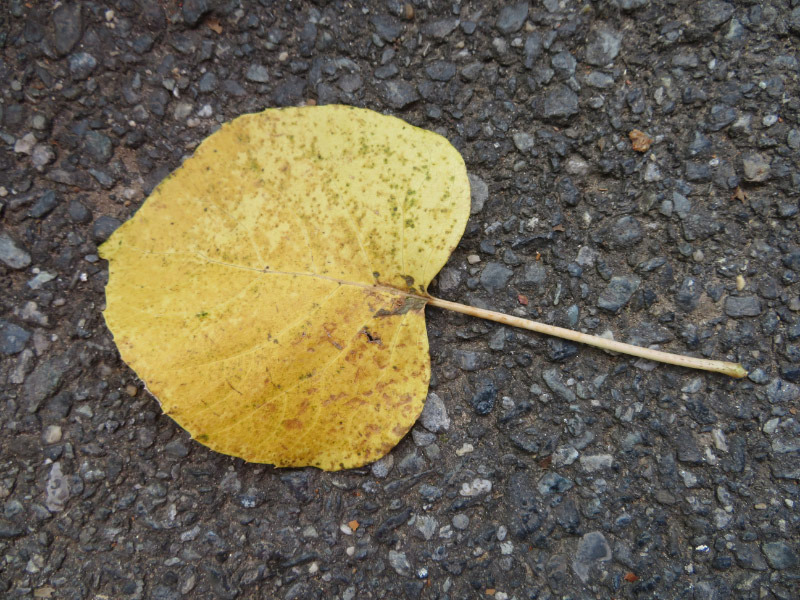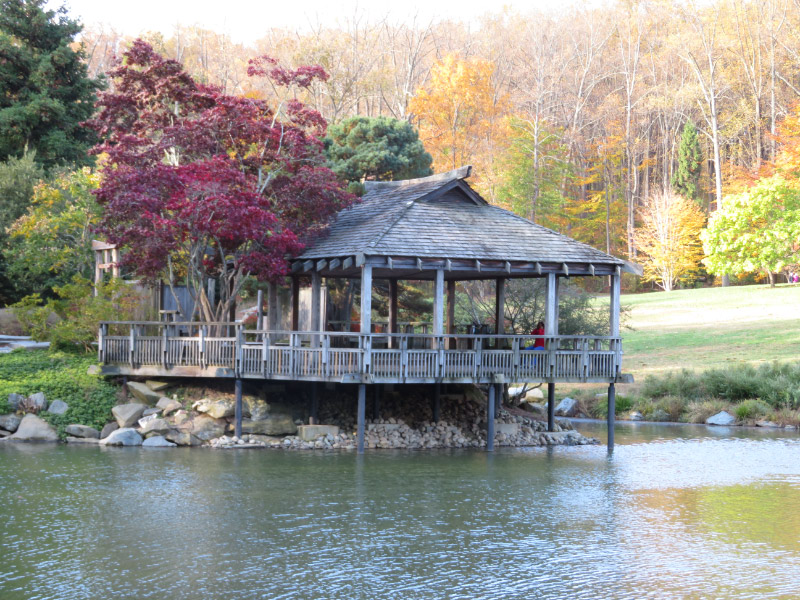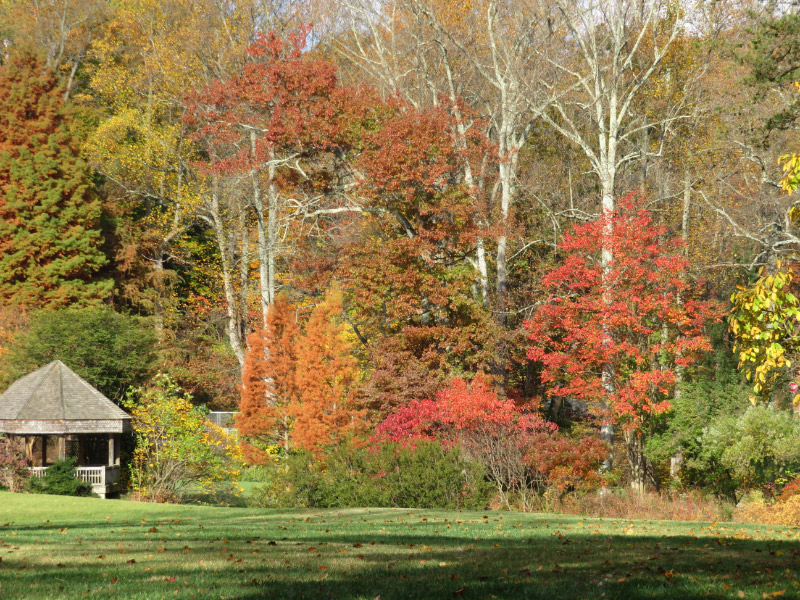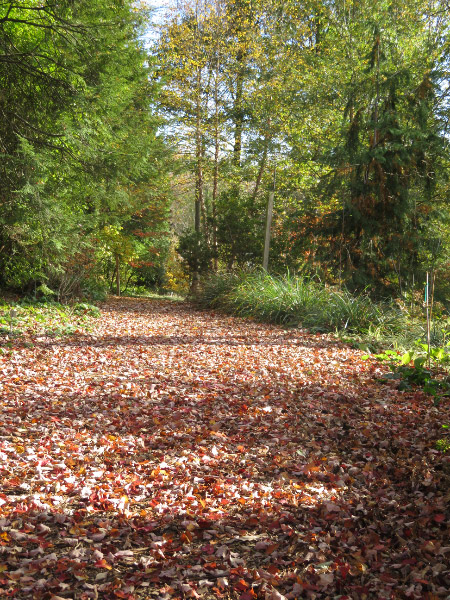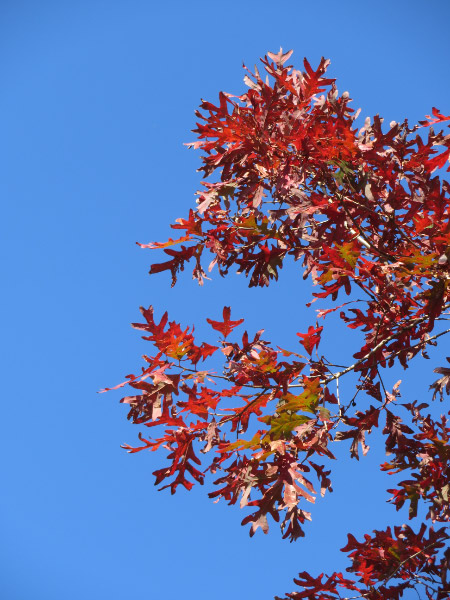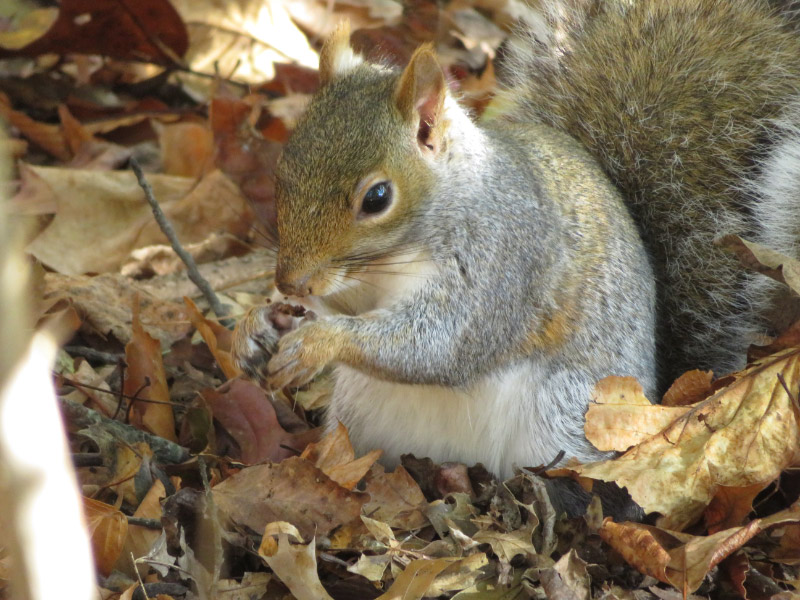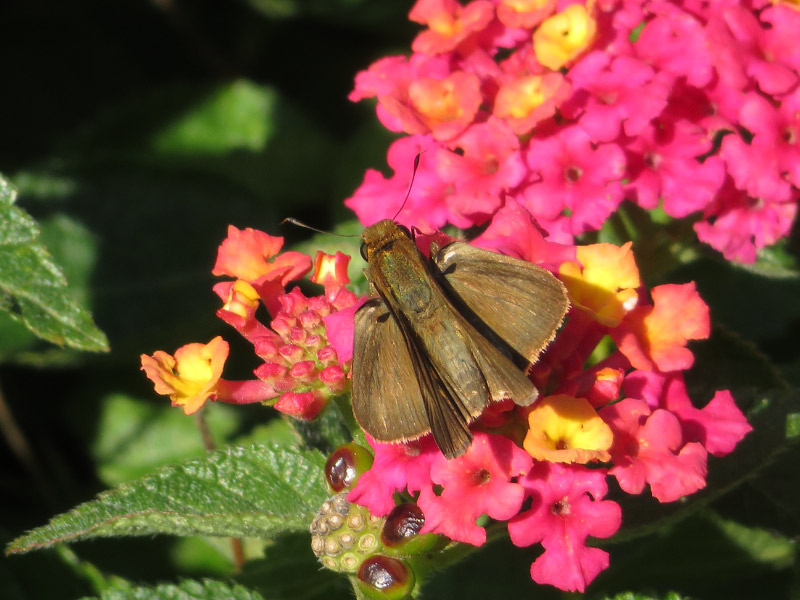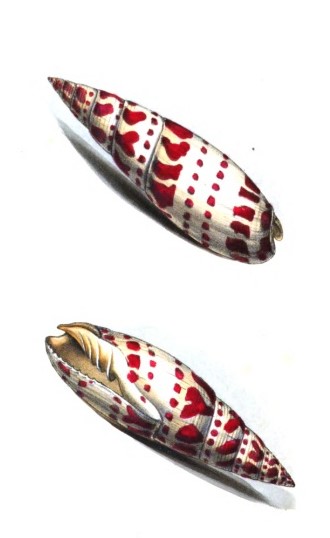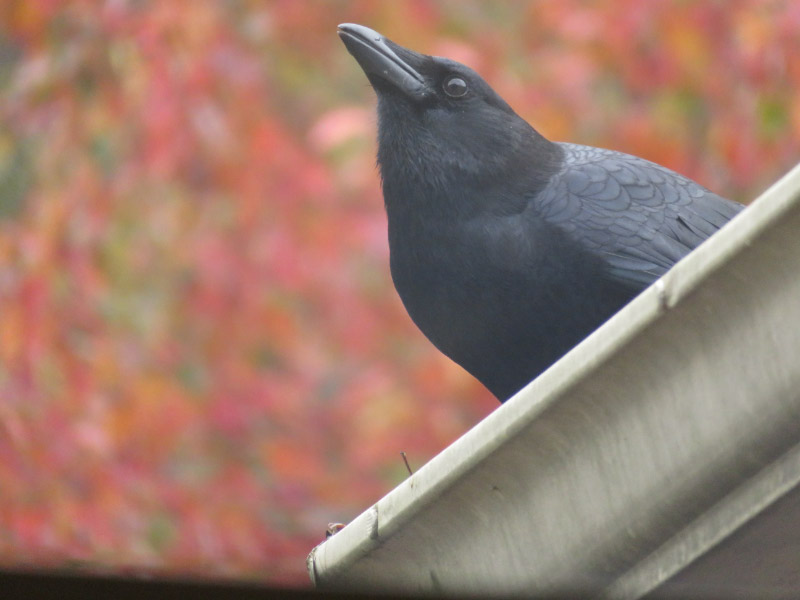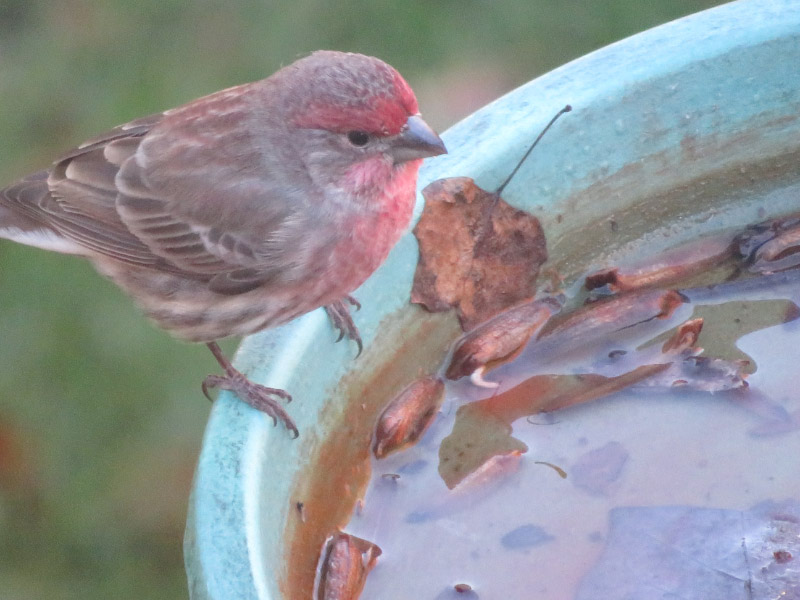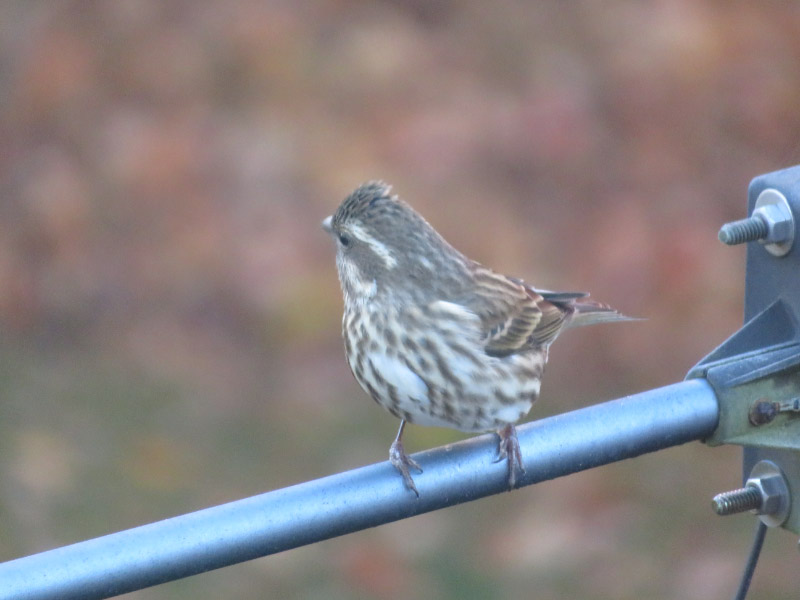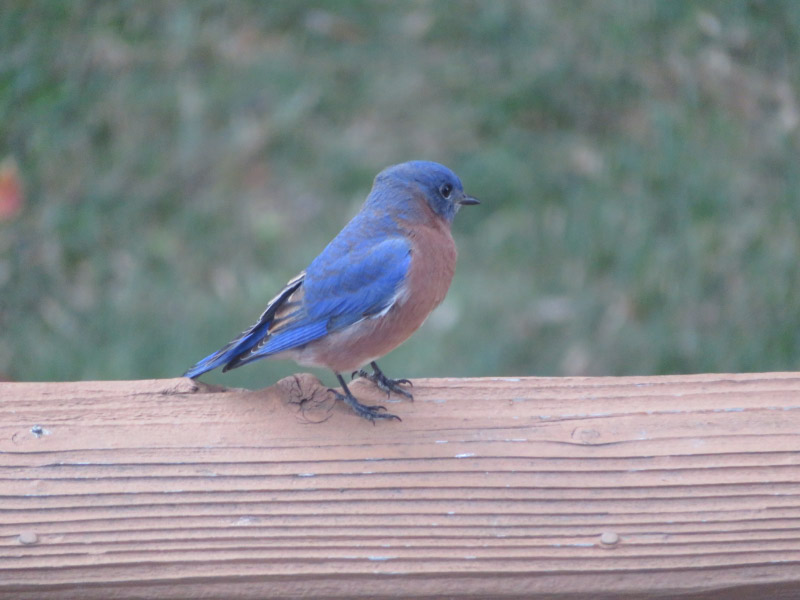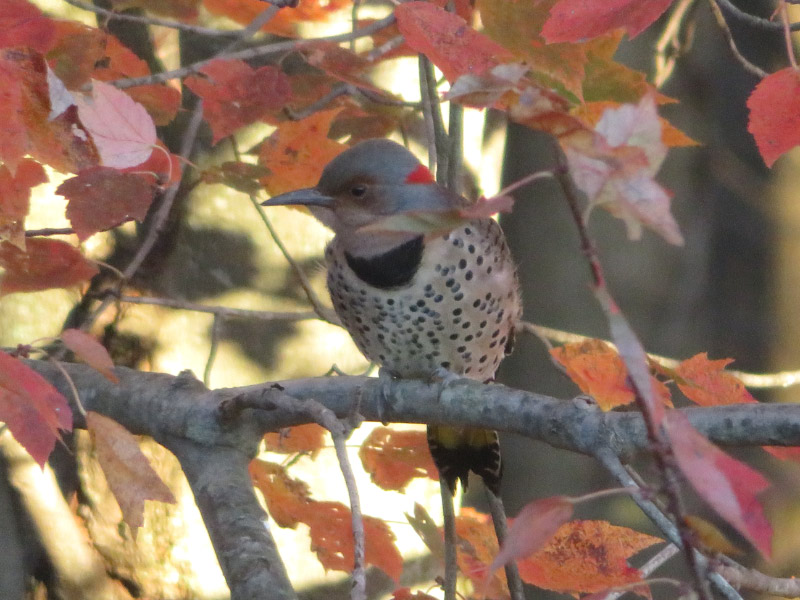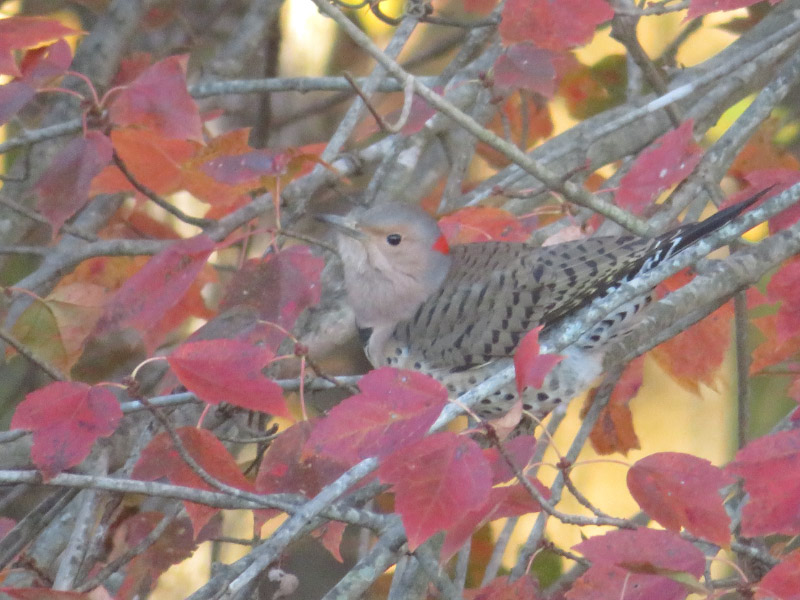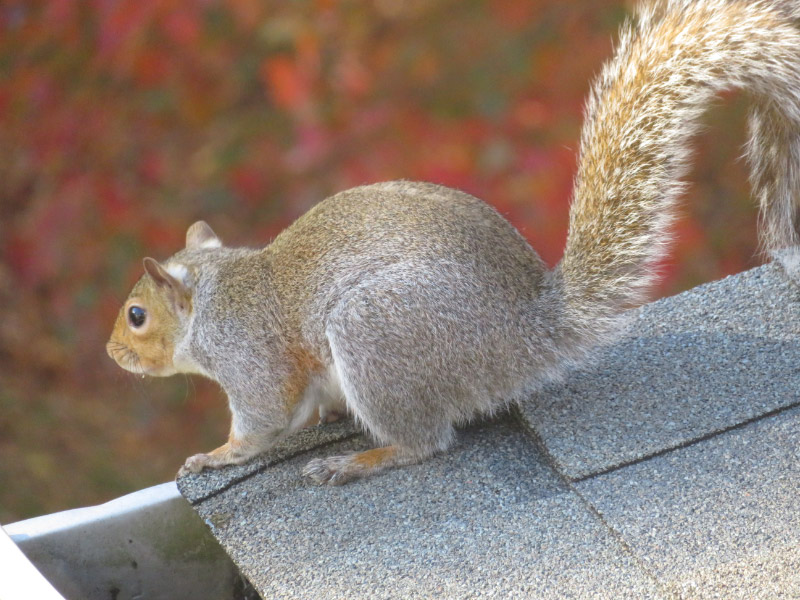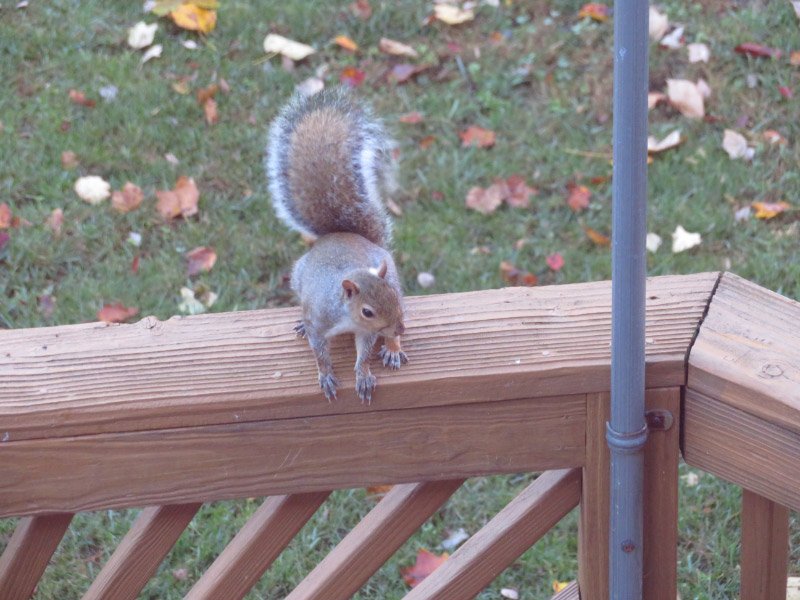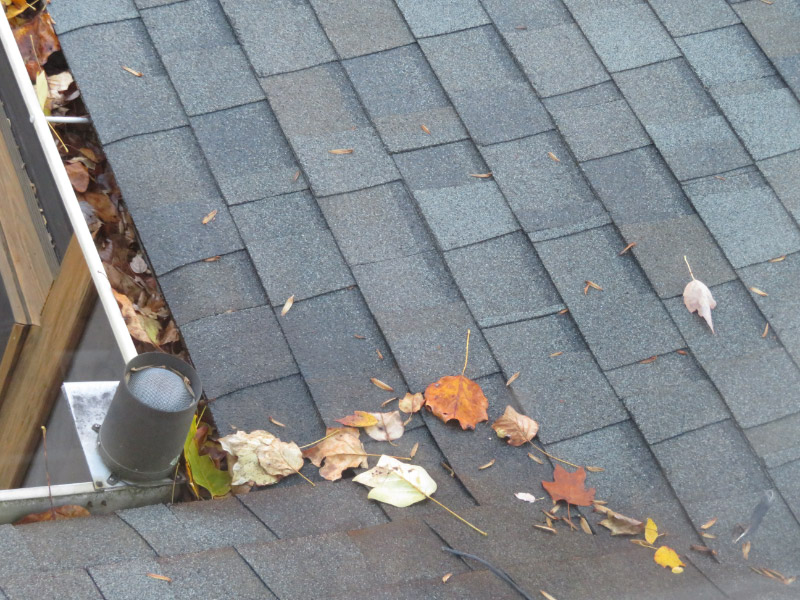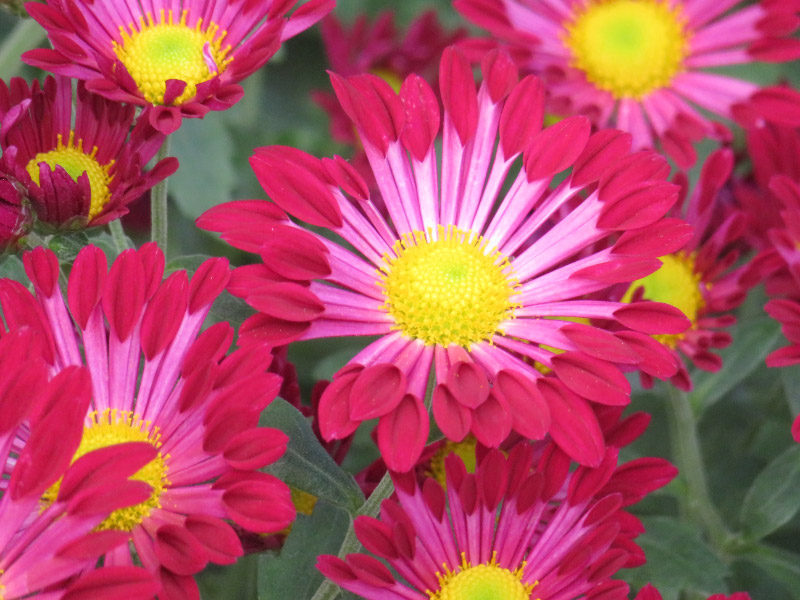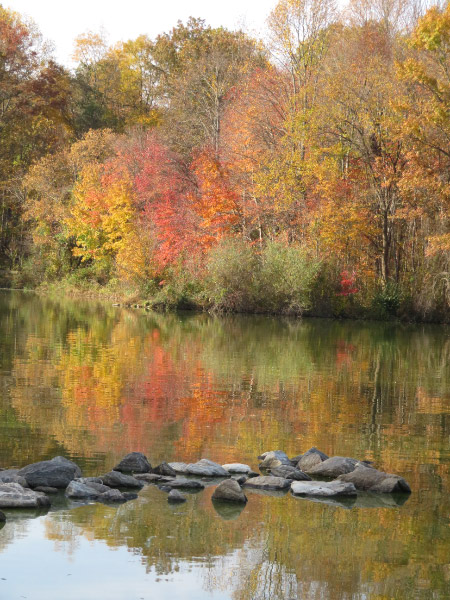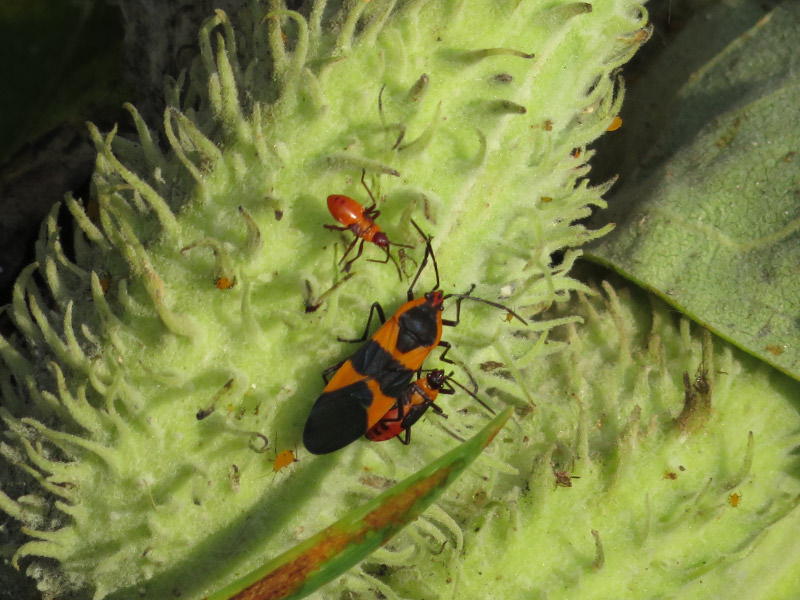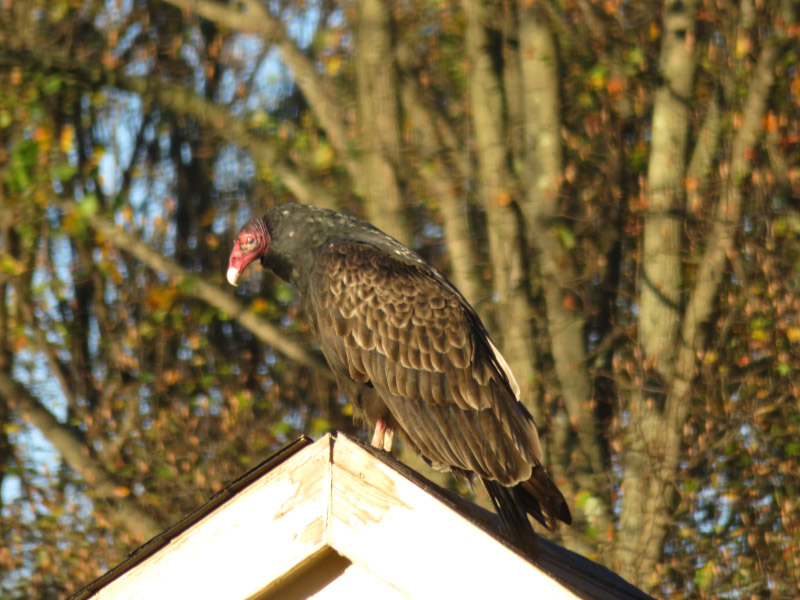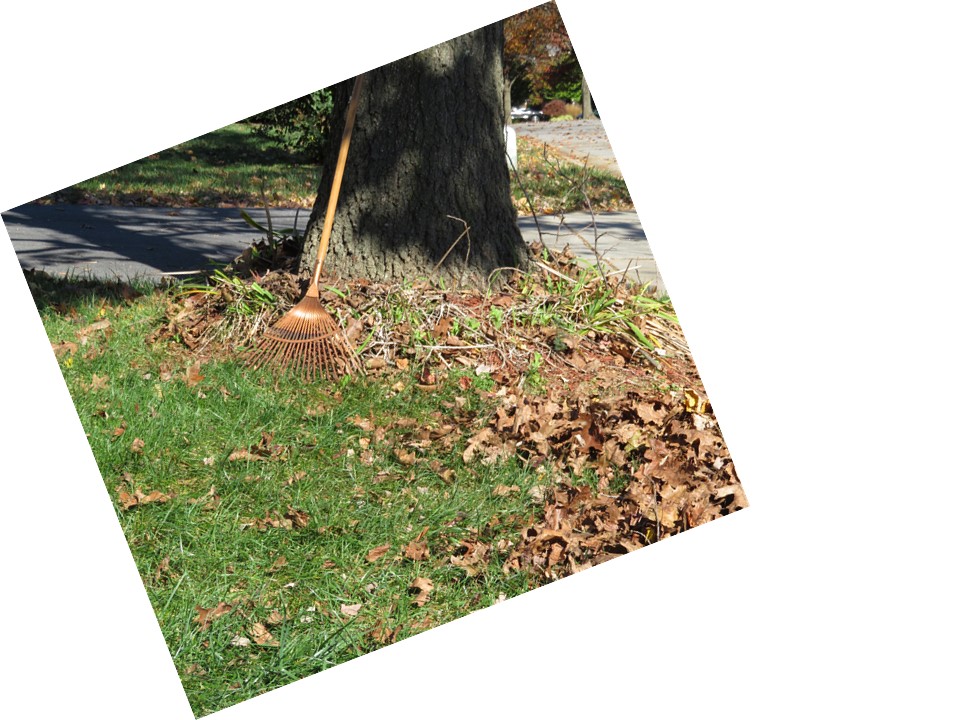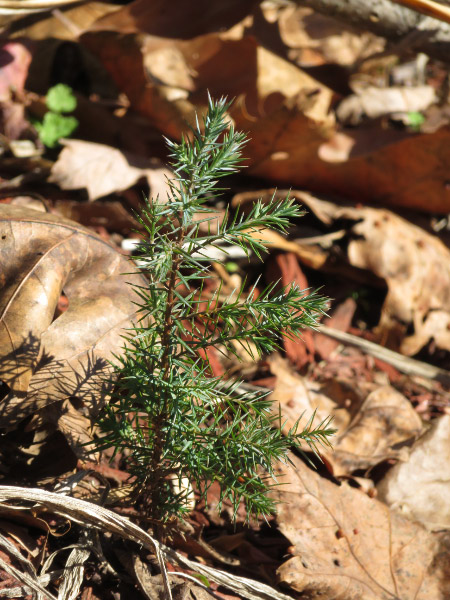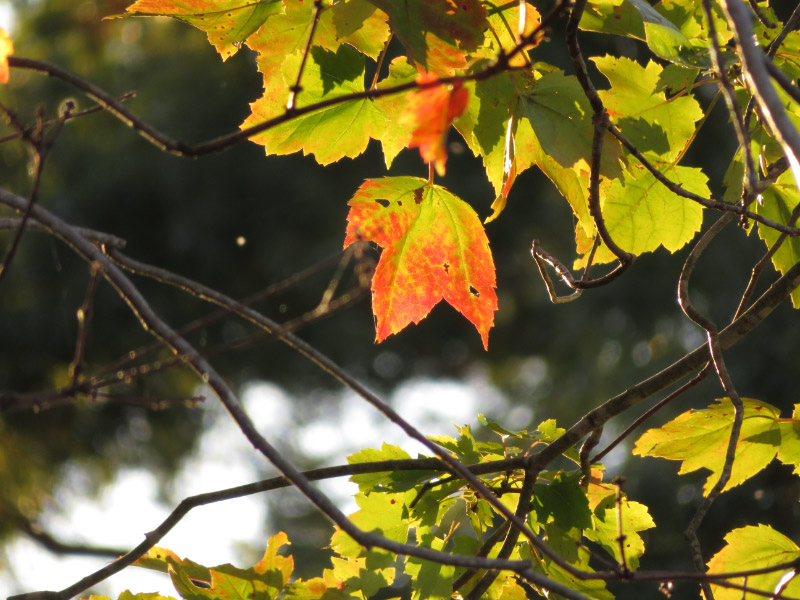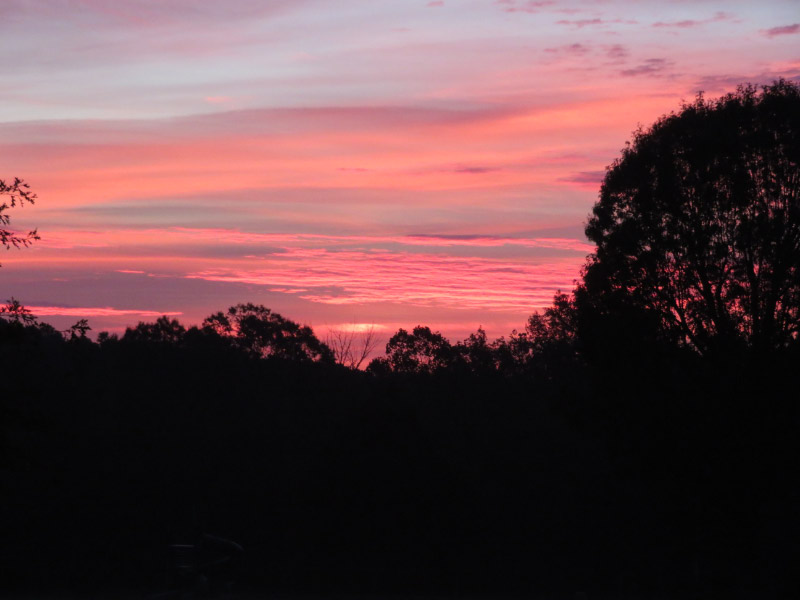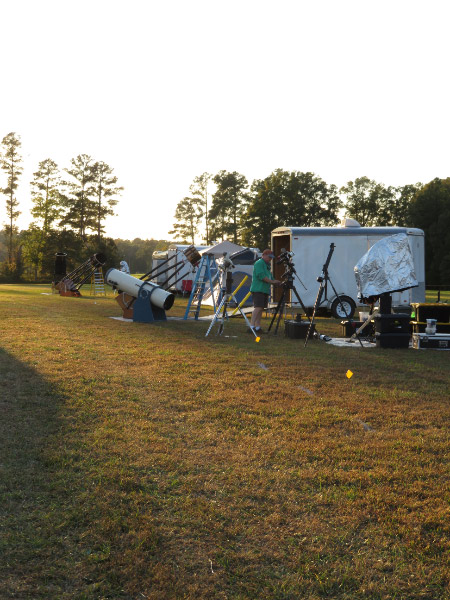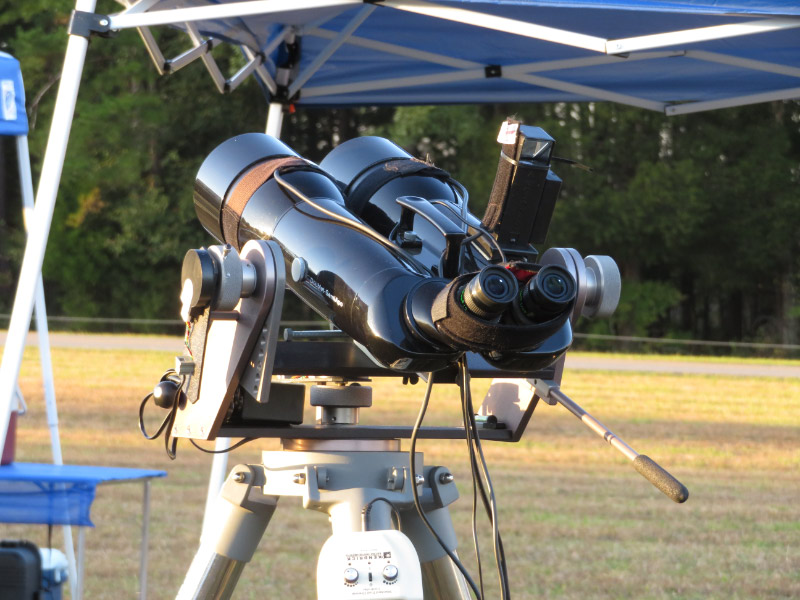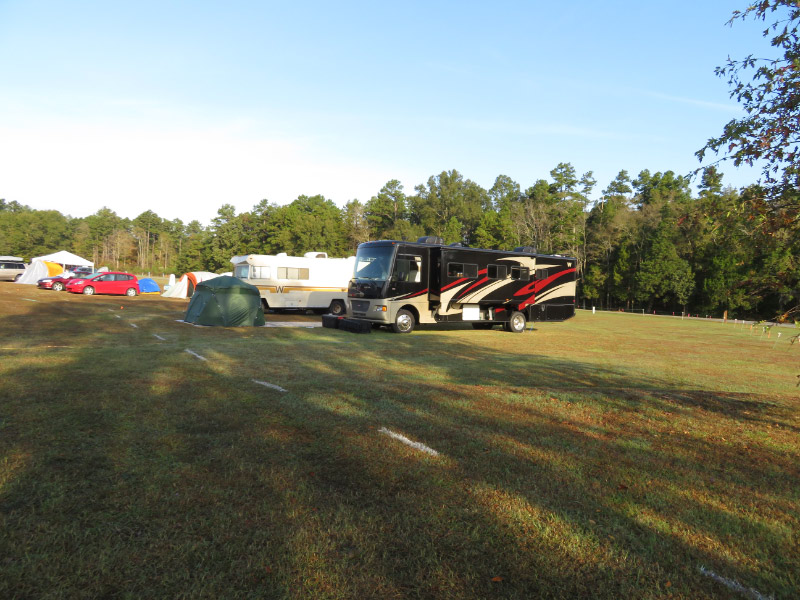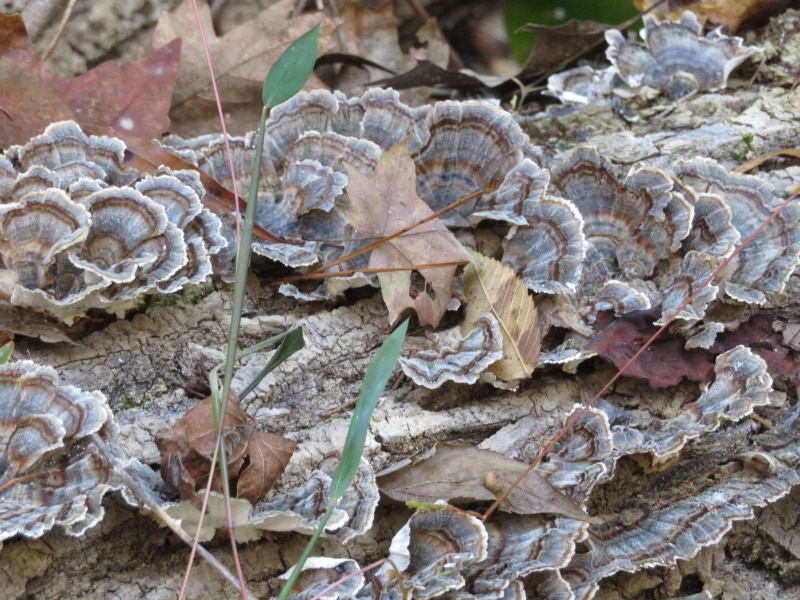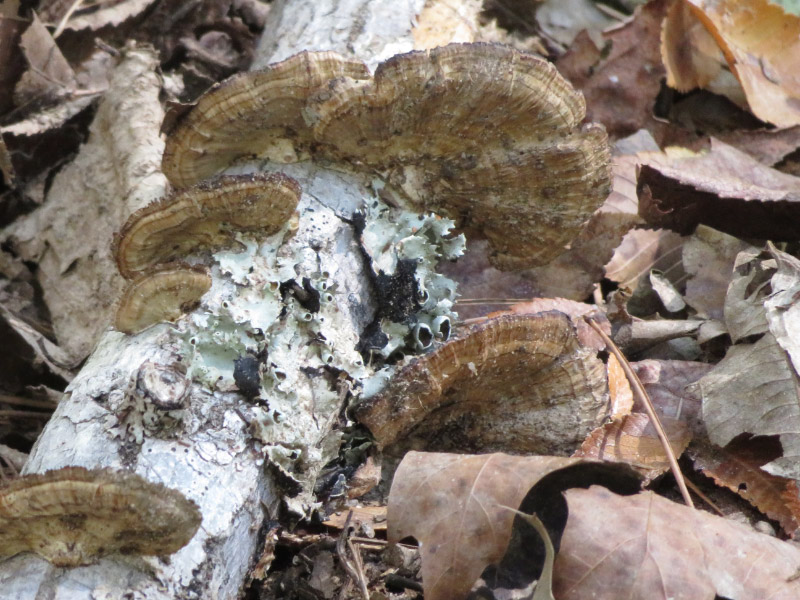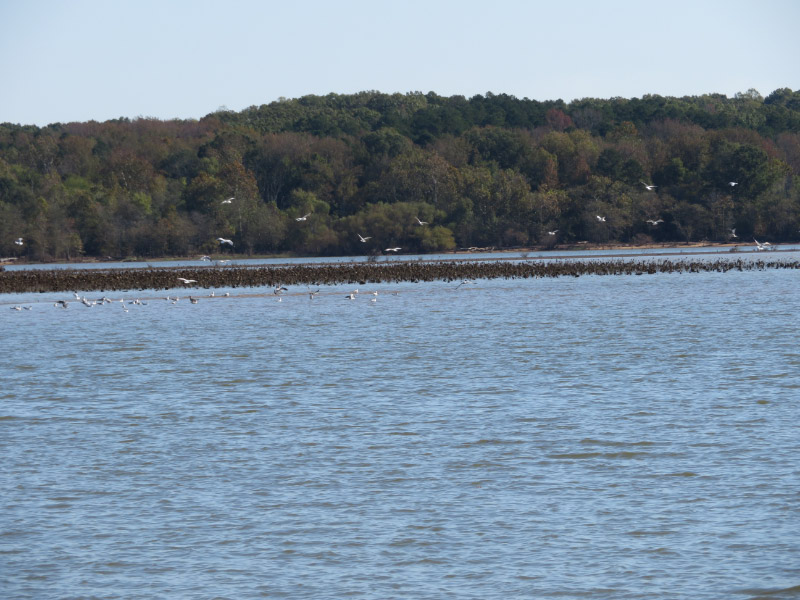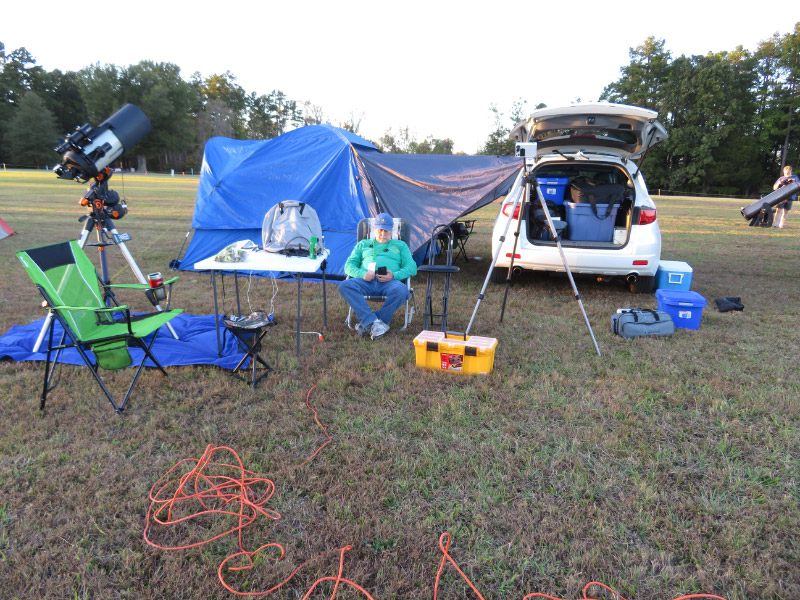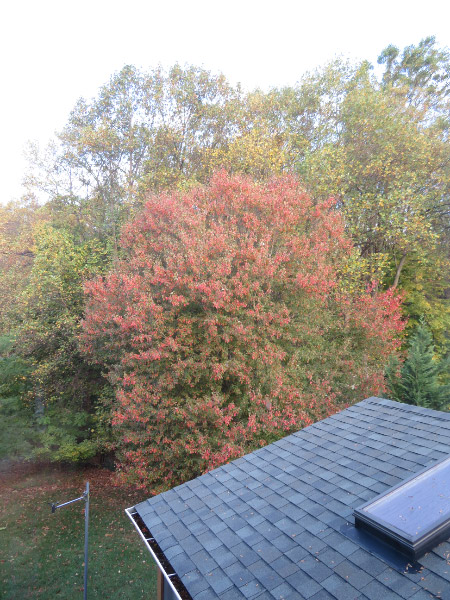 Often we see trees as a group – a forest…and not as individuals. There are three in my backyard that I see as individuals even though they are closely associated with other trees. I can see all three from my office window. The first is a red maple. The first picture was taken on Halloween through my office window over the roof of our covered deck.
Often we see trees as a group – a forest…and not as individuals. There are three in my backyard that I see as individuals even though they are closely associated with other trees. I can see all three from my office window. The first is a red maple. The first picture was taken on Halloween through my office window over the roof of our covered deck.
The next was taken from the ground in our backyard about a week later. Its leaves had started to fall by that time. It is not a forest tree. Our neighbor planted it on his side of the property line before we moved into our house over 20 years ago. But the tulip poplars and beech trees of the forest provide a yellow backdrop to this trees red foliage. It survived a large grape vine that grew from the forest into its crown before I took my big pruners into the forest and cut the vine at ground level about 10 years ago, annual deer munching on its lower branches in the winter and spring, and being squished by some pines and an oak before they were cut down. It is a survivor.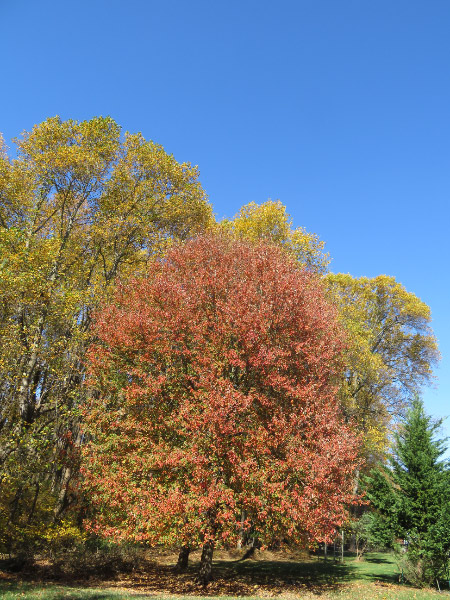
I enjoy its shape and color…all through the year: the red stems of late winter, the tiny red flowers, the new leaves that start out red then turn green, the red samaras that turn brown and fly off the tree, the lush green of summer, and then the mixture of red and green leaves that fly off the tree in the fall – usually in one week.
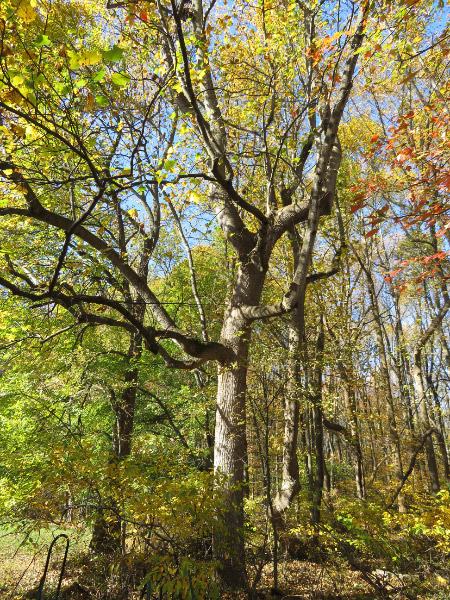 The section tree is a tulip polar. It is at the edge our forest. It has never been as straight and many of the others of its kind in the forest. It never has been. I think I like it more for its imperfections.
The section tree is a tulip polar. It is at the edge our forest. It has never been as straight and many of the others of its kind in the forest. It never has been. I think I like it more for its imperfections.
This year the tree seemed to have many flowers in the spring and they must have been fertilized because there are large number of seed pods now.
The tulip polar leaves turn brown very quickly once they fall from the tree. I always feel lucky to find one that still has some green. The first year we moved into our house, on the first of November, the leaves were flying off the tulip polar with every breeze. They are at least a week later this year.
 The last tree that I see as an individual in my backyard is the newest. It is a black walnut and a relatively recent addition. In this jumbled picture – it is in the middle with the stems containing multiple leaflets – yellow and green as it changes for the winter. It came up on its own, probably planted by a squirrel. I didn’t realize it was a black walnut until last year when it had two nuts on it.
The last tree that I see as an individual in my backyard is the newest. It is a black walnut and a relatively recent addition. In this jumbled picture – it is in the middle with the stems containing multiple leaflets – yellow and green as it changes for the winter. It came up on its own, probably planted by a squirrel. I didn’t realize it was a black walnut until last year when it had two nuts on it.
About 5 years ago I had cut honey suckle and grape vines off a small tree in that area but I didn’t know what kind of tree it was at the time. Now the crown gets sun late in the day in our neighbor’s backyard and the lower part gets sun from late morning onward in our yard. Its tall enough now that the deer can’t hurt it very much. So – I am watching to see how soon it will perturb the forest around it. Black walnuts make space for themselves once they have a good start and this one is getting close to the size that it will have that impact.
